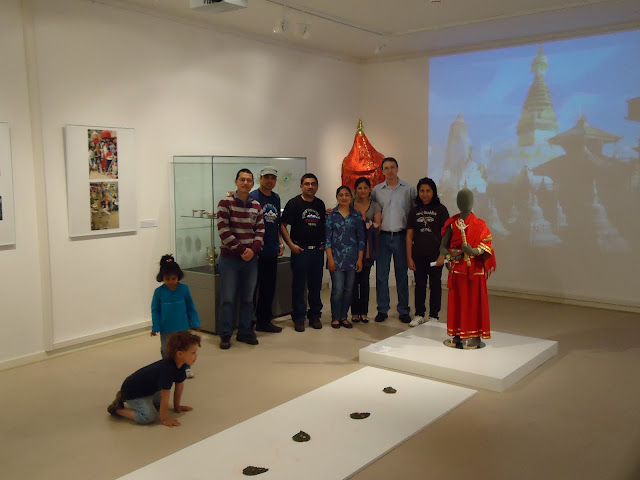If you see your culture, your people and your kind of environment in thousandsof kilometers away from your homeland, how will you feel? There is no doubt that it provides you plenty of reasons to be happy and proud of. That provides you plenty of joys and feelings of being touched with your home, your family and with your country whom you loved a lot. Similar experience we got when we visited a photo exhibition about Nepal, more focussed on rich NEWARI culture, here in Goettingen, a small university town of Germany. This photo exhibition has started since 8 May, and will last until 10 July, 2010. Yes, we know (8 May) is the very special day in human mankind, because on this day, the founder of International RED CROSS, Henry Dunant was born in (1910 AD)! and, a more reason to be happy on this day (8 May, 2011) for us here in Goettingen, Germany is the organisation of photo exhibition about Nepal, a land of beauty and rich cultures. More focussing on Newar culture and the tradition to become "monk" a true practitioner of peace and Buddhism.We are very thankful to the organiser, and Dr. Michael for providing an opportunity to remind our own culture to us, and familiarising this rich culture to kind of people of Germany. We found that many people love Nepal and nepalese culture here. As we are celebrating VISIT NEPAL YEAR 2011, it would be great help to all of us to make it successful event too. Many many thanks to all the organisers and specially to Dr. Michael Mühlich...
 |
| In front of the installation of the movie on a similar initation ceremony in Bhaktpur, filmed by Christian Bau. Present is also Dr. Michael Mühlich, who studied Newar culture and loved Nepali people. He stayed there more than four years, studied the culture and organised this exhibition in Goettingen, Germany. Danke!! |
 |
| Grouped around the "Seven steps": This scene of the initiation ceremony called bare chuyegu by Newars reminds of the "seven steps" that, according to mythology, prince Siddartha made immediately after his birth. It also reminds Newars of leaving the worldly sphere for the time of the ceremony, since the betel leaves contain betel nuts and coins, signs of reverence and wealth that the initiates have to step over in order to separate them from this-worldly affairs | |
 |
| Newar children posing in their clothes as young monks (bare or bhiksu), in the courtyard of the old king's palace in Durbar Square, Kathmandu. This highlights their procession after showing reverence to the king's seat near the entrance of the palace |
 |
| Model of a young monk, with ornaments, scepter and begging bowl. The traditional robe of Varjacarya monks in Kathmandu is in red, while in Patan the Sakya monks wear a white robe for initiation. In Bhaktpur even yellow robes among the Sakya and painter castes have been observed |
 |
| Positioned on the upper right of the show case, is an original ceremonial crown of the Newar Varjracarya priest. For leading the ceremony he also needs a Vajra (scepter) and a Ghanti (bell), insignia of the deity Vajrasattva. Positioned to the left: Pala for ceremonial lightning of oil or butter lamps. Below, instruments of traditional Nepali music |
 |
| The ritual step of the cutting of the tupi, the tuft of hair at the fontanel, in memory of Buddha who left "caste" by this act. After this act the "wound" is covered with an amba fruit (lat. Myrobolan), and sprinkled with holy water from the "four oceans" |
 |
| The pit for the fire sacrifice, with ideally 32 offerings to be offered in the name of each of the initiates |
 |
Model of young monk (bare or bhiksu). The robe is nowadays used only for the 3- 5 days period of the ceremony. The documented ceremony makes him a full member of the religious community (sangha) of a given monastery (bahal). A boy may decide later in life to learn to be a priest from his father
|
 |
| Some of GöNeS (Goettingeli Nepalise Society members got chance to visit the exhibition |
PLEASE Donot forget to visit the photo exhibition at Theaterplatz 15, Goettingen, Germany
For more information please visit:
http://www.uni-goettingen.de/en/50226.html?cid=18408









































1 comment:
I'd like to know whether the bares use any patched robe (five- or seven-skandhas civara) like the commonly worn ones by Buddhist monks in other traditions.
Do they wear some kind of vests (similar to the Tibetans) under their upper cloths?
Post a Comment